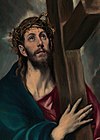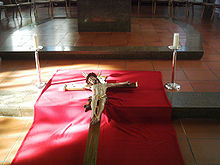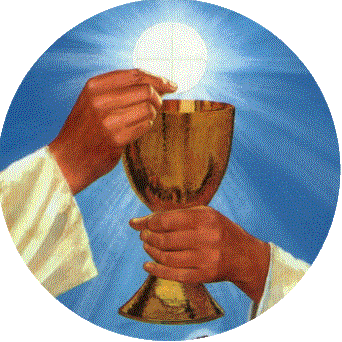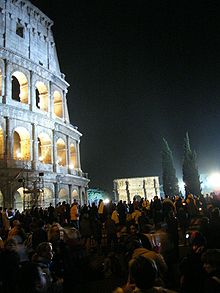A Celebration of Women
pays our respect to one of the Highest of Holy Days for Christians around the world,
GOOD FRIDAY
Good Friday, also known as Holy Friday, Black Friday, Great Friday, is a holiday observed primarily by Christians commemorating the crucifixion of Jesus Christ and his death as believed by Christians at Calvary. The holiday is observed during Holy Week as part of the Paschal Triduum on the Friday preceding Easter Sunday, and often coincides with the Jewish observance of Passover.
Based on Christian scripture. (The Preparation Day was the day before the Sabbath – The Sabbath is Saturday) of the Sanhedrin Trial of Jesus, the Crucifixion of Jesus was most probably on a Friday. The estimated year of Good Friday is AD 33, by two different groups, and originally as AD 34 by Isaac Newton via the differences between the Biblical and Julian calendars and the crescent of the moon. A third method, using a completely different astronomical approach based on a lunar Crucifixion darkness and eclipse model (consistent with Apostle Peter’s reference to a “moon of blood” in Acts 2:20) arrives at the same date, namely Friday April 3, AD 33.Acts of Reparation to Jesus ChristEl Greco‘s Jesus Carrying the Cross, 1580
The Roman Catholic tradition includes specific prayers and devotions as acts of reparation for the sufferings and insults that Jesus suffered during his Passion on Good Friday. These Acts of Reparation to Jesus Christ do not involve a petition for a living or deceased beneficiary, but aim to repair the sins against Jesus. Some such prayers are provided in the Raccolta Catholic prayer book (approved by a Decree of 1854, and published by the Holy See in 1898) which also includes prayers as Acts of Reparation to the Virgin Mary.
In his encyclical Miserentissimus Redemptor on reparations, Pope Pius XI called Acts of Reparation to Jesus Christ a duty for Catholics and referred to them as “some sort of compensation to be rendered for the injury” with respect to the sufferings of Jesus.
Pope John Paul II referred to Acts of Reparation as the “unceasing effort to stand beside the endless crosses on which the Son of God continues to be crucified“.In the Roman Catholic Church
The Catholic Church treats Good Friday as a fast day, which in the Latin Rite of the Church is understood as having only one full meal (but smaller than a regular meal – often substituting meat with fish) and two collations (a smaller repast, two of which together do not equal one full meal). In countries where Good Friday is not a day of rest from work, the afternoon liturgical service is usually put off until a few hours after the recommended time of 3 p.m.Crucifix prepared for veneration on Good FridayThe Roman Rite ordinarily has no celebration of Mass after that of the Lord’s Supper on Holy Thursday evening until that of the Easter Vigil unless a special exemption is granted for rare solemn or grave occasions by the Vatican or the local bishop, and the only sacraments celebrated are Baptism (for those in danger of death), Penance and Anointing of the Sick. While there is no celebration of the Eucharist, Holy Communion is distributed to the faithful only in the Service of the Passion of the Lord, but can be taken at any hour to the sick who are unable to attend this service.The altar remains completely bare, without cross, candlesticks or altar cloths. It is customary to empty the holy water fonts in preparation of the blessing of the water at the Easter Vigil. Traditionally, no bells are rung on Good Friday or Holy Saturday until the Easter Vigil.
The Celebration of the Passion of the Lord takes place in the afternoon, ideally at three o’clock, but for pastoral reasons a later hour may be chosen. The vestments used are red (more commonly) or black (more traditionally). Before 1970, they were black except for the Communion part of the rite, for which violet was used, and before 1955 black was used throughout. If a bishop celebrates, he wears a plain mitre.
The liturgy consists of three parts: the Liturgy of the Word, the Veneration of the Cross, and Holy Communion.
The first part, the Liturgy of the Word, consists of the reading or chanting of Isaiah 52:13-53:12, Hebrews 4:14-16, 5:7-9, and the Passion account from the Gospel of John, which is often divided between more than one singer or reader. This part concludes with a series of prayers: for the Church, the Pope, the clergy and laity of the Church, those preparing for baptism, the unity of Christians, the Jewish people, those who do not believe in Christ, those who do not believe in God, those in public office, those in special need.
The second part of the Good Friday liturgy is the Veneration of the Cross: a crucifix, not necessarily the one that is normally on or near the altar at other times, is solemnly displayed to the congregation and then venerated by them, individually if possible, while special chants are sung.
The third and last part is Holy Communion according to a rite based on that of the final part of Mass, beginning with the Our Father, but omitting the ceremony of “Breaking of the Bread” and its related chant, the “Agnus Dei.”The Eucharist, consecrated at the Mass of Holy Thursday is distributed at this service.
Before the reform of Pope Pius XII, only the priest received Communion in the framework of what was called the “Mass of the Presanctified“, which included the usual Offertory prayers, with the placing of Wine in the Chalice, but which omitted the Canon of the Mass.
Priest and people then depart in silence, and the altar cloth is removed, leaving the altar bare except for the cross and two or four candlesticks.The Way of the Cross, celebrated at the Colosseum ie on Good Friday.In addition to the prescribed liturgical service, the Stations of the Cross are often prayed either in the church or outside, and a prayer service may be held from midday to 3.00 p.m., known as the Three Hours’ Agony. In countries such as Malta, Italy, Philippines, Puerto Rico and Spain, processions with statues representing the Passion of Christ are held.In Polish churches, a tableau of Christ’s Tomb is unveiled in the sanctuary. Many of the faithful spend long hours into the night grieving at the Tomb, where it is customary to kiss the wounds on the Lord’s body. A life-size figure of Christ lying in his tomb is widely visited by the faithful, especially on Holy Saturday. The tableaux may include flowers, candles, figures of angels standing watch, and the three crosses atop Mt Calvary, and much more. Each parish strives to come up with the most artistically and religiously evocative arrangement in which the Blessed Sacrament, draped in a filmy veil, is prominently displayed.Vespers – epitaphios (“winding sheet)
In the afternoon, around 3 pm, all gather for the Vespers of the Taking-Down from the Cross, commemorating the Deposition from the Cross. The Gospel reading is a concatenation taken from all four of the Gospels. During the service, the body of Christ (the soma) is removed from the cross, as the words in the Gospel reading mention Joseph of Arimathea, wrapped in a linen shroud, and taken to the altar in the sanctuary. Near the end of the service an epitaphios or “winding sheet” (a cloth embroidered with the image of Christ prepared for burial) is carried in procession to a low table in the nave which represents the Tomb of Christ; it is often decorated with an abundance of flowers. The epitaphios itself represents the body of Jesus wrapped in a burial shroud, and is a roughly full-size cloth icon of the body of Christ. Then the priest may deliver a homily and everyone comes forward to venerate the epitaphios. In the Slavic practice, at the end of Vespers, Compline is immediately served, featuring a special Canon of the Crucifixion of our Lord and the Lamentation of the Most Holy Theotokos by Symeon the Logothete. Giotto -Italian Early Renaissance Painter, Sculptor, and Architect (1267 – 1337)
Giotto -Italian Early Renaissance Painter, Sculptor, and Architect (1267 – 1337)
May all the Women of our World paying honor to this day, find Peace.
Copyright 2022 @ A Celebration of Women™ The World Hub for Women Leaders That Care
GOOD FRIDAY – The Meaning therein….
April 6, 2012 by








